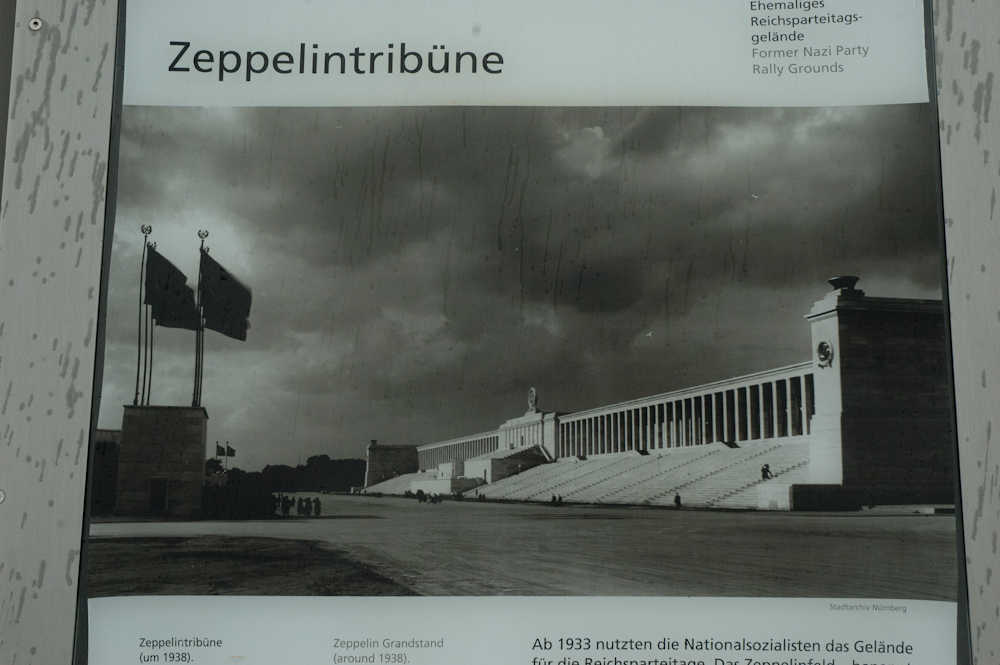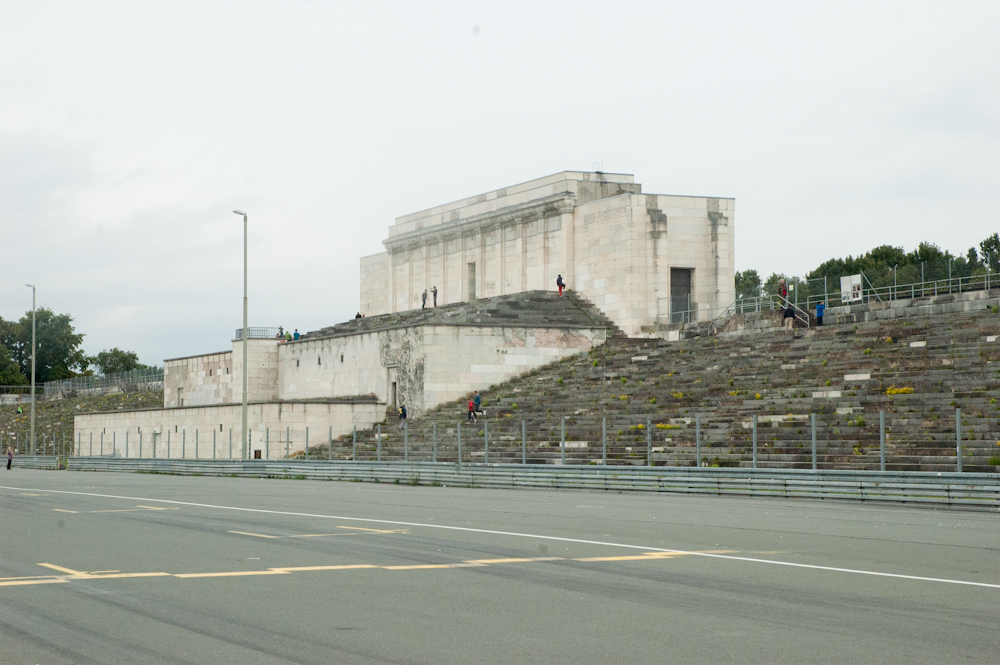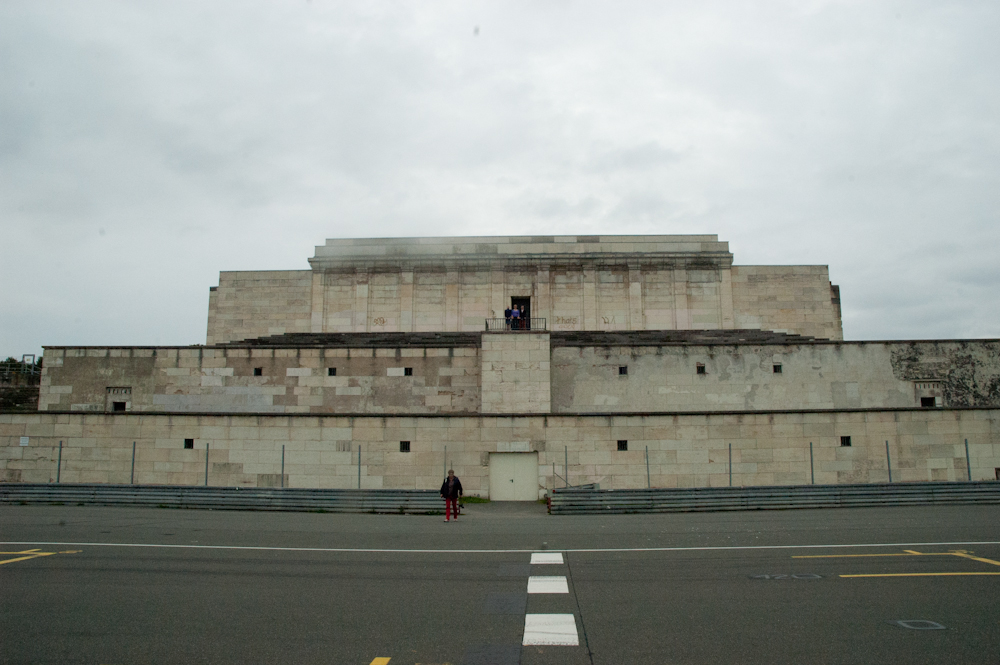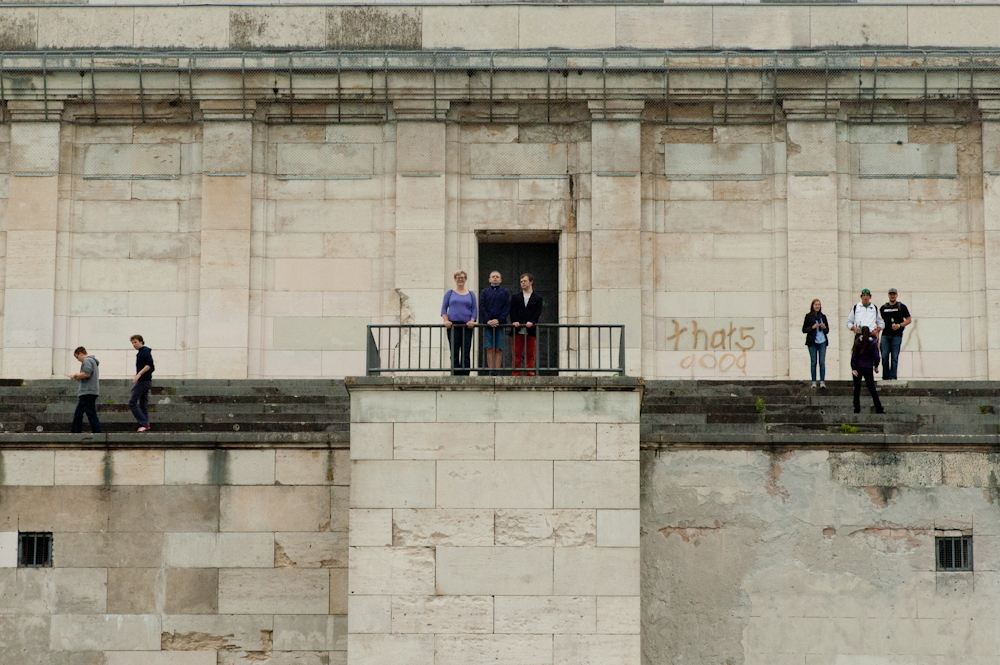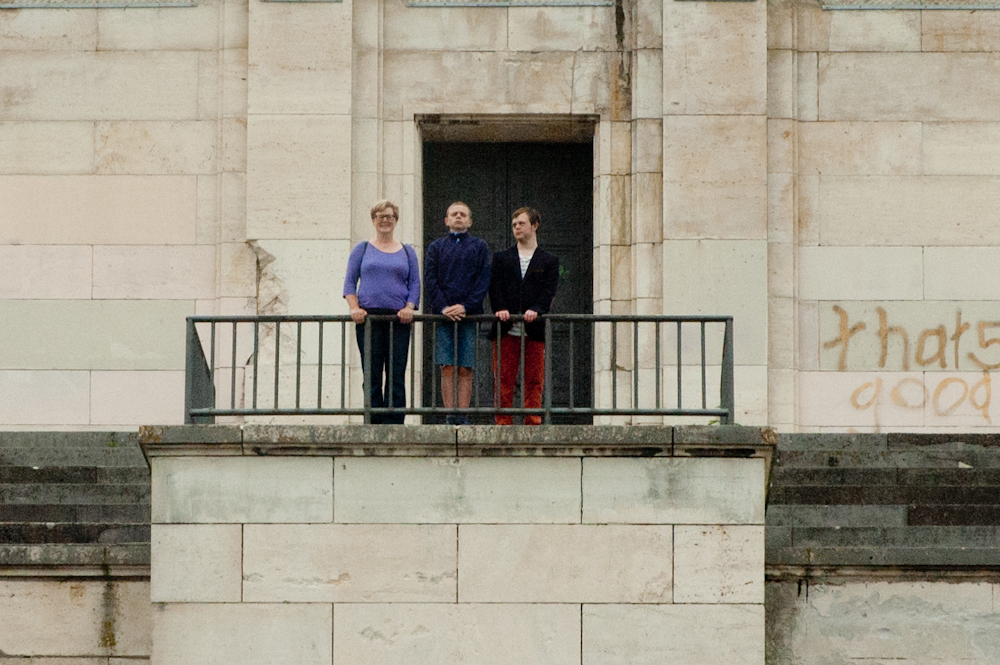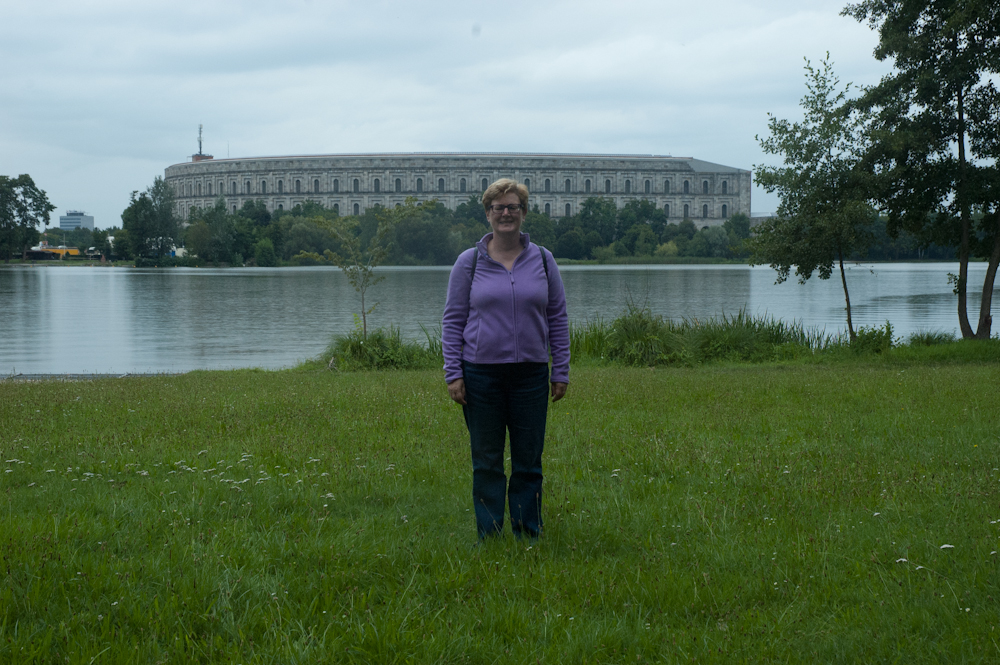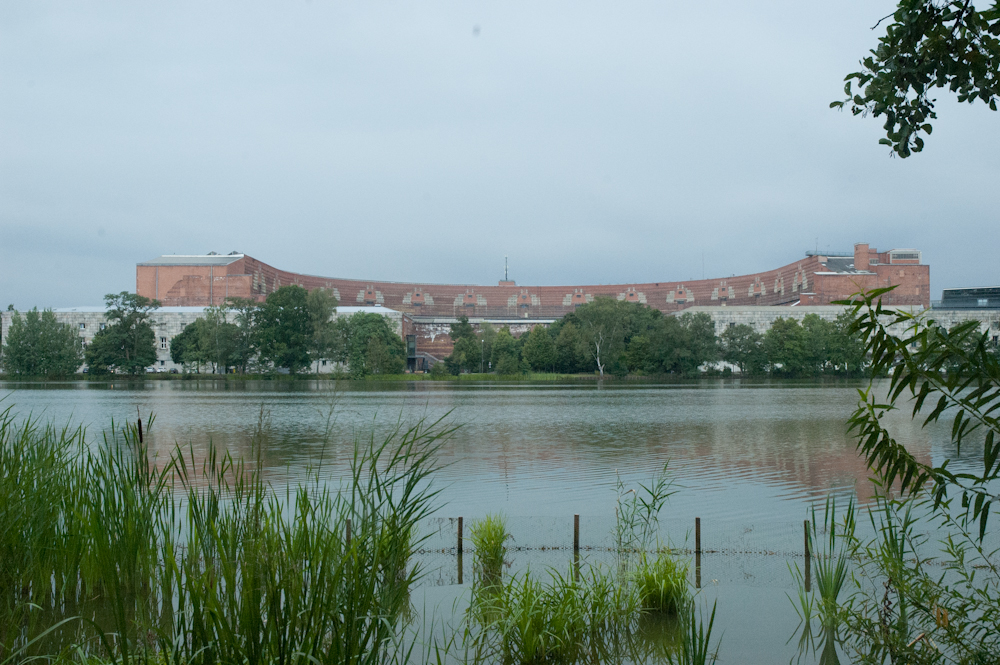Our family seems to really like Germany – the people, the food and the friendliness really work for us. It was also an opportunity to catch up with both Nina and Melanie, who had been our au pairs on their gap years before going to university. This summer we did a house swap with a lovely family in Bavaria. We did two day trips to Nuremburg, the first day concentrating on the old town, the Altestadt, the weather was great and we had a lovely time.
On the second day, it felt important to visit the Nazi Rally Grounds and the Documentation Centre, which is housed in part of the Kongresshalle. We were also able to walk round the grounds of the 11 square kilometre rally site and stand in the remaining part of the Zeppelintribune. Obviously it was a big dip back into history. Some of you will know far more about this period than me – my knowledge is really patchy. These are my thoughts from my visit, as the daughter of a Second World War survivor, the parent of a child with disability, and as a leadership development professional.
Wearing my leadership development hat first, one of the modules in the ILM Leadership qualification I deliver is “Review own ability to set direction and communicate this to others” – standard things a leader can and must do to be effective. Truthfully I find it hard to find good, inspiring examples of how and where this is done well in organisations, over time with multiple stakeholders and delivering tangible results. I struggle with this module much more than any of the others. Imagine my shock when I found that these things – setting direction and communicating it with others – were something Adolf Hitler seemed to have paid a lot of attention to. He and his party seemed to have done consistently well in these areas over a long period of time, for the wicked purpose of the supremacy of his own ethnic group – the Aryan Race.
As I walked around the centre I was increasingly horrified to learn more and more about how he created, sold and communicated his vision – and to see it in this way – as well the years and decades he spent on his cause. Thinking about how we often do things today – there were no quick fixes, focus groups, one off initiatives and then seeing the job as done. Hitler’s commitment to his evil cause appeared to be the focus all of his adult life. His abuse of power and emotional manipulation of people disgusted me. I was horribly sad to find out more and more about how effective it had seemed to be. Each new exhibit upset me as the story was told, and the horrendous cruelty and impact on millions of people became more and more vivid and clear.
These are some of the things I noticed:
- Call it what you will, his vision statement, purpose, mission, direction – was horribly clear, unambiguous and measureable. I feel sick.
- In the 1920s, he went to prison for six months – came out and manipulated those in power around him. This seemed an example of how much he was in it for the long haul. In its own horrifying way, it seemed a hallmark of his success – his ability to place short term difficulty in the context of longer term gain.
- His book “Mein Kampf” (“My Struggles”) – was published quite early on in 1925 and 1926 – this helped raise money as well as get his message out. He clearly ticked the written communication box.
- The public only ever saw images of him taken by his own photographer, Hoffman. Talk about managing your brand image in the press, country and worldwide; and obviously way before before social media.
- His skills as an orator are well documented – he placed emphasis on how he wanted people to feel – Ein Volk, Ein Reich, Ein Fuhrer – this is a step beyond emotional intelligence or contagion – it was skilful and consistent emotional manipulation – with the emphasis on feelings bypassing rational thought. After all, how else do you manipulate people to do dreadful and unjustifiable acts.
- He furthered a “Fuhrer myth” about himself and his own leadership. A unique genius, aloof and above others, and yet one of us, a simple man of the people. People could identify with him, and yet hand over their power to him too. Chilling.
- His abuse of power was taken over time and used existing structures. He placed himself in a position of absolute authority, outside of legal practices, uniting the top three roles of president, chancellor and Fuhrer into one. Unopposable.
- He used his power to stop the things he didn’t like, ramping up each time – for example the employment of Jews, before doing worse and worse things. He stopped the voices of others, marginalising and eliminating competitor parties and burning books from other disciplines.
- In the 1930s the Nazi Party Rally Grounds at Nuremberg were a huge, consistent, comprehensive demonstration of power and message of the vision, involving many, many others in their delivery. Active imagery used to deliver the vision, engage and influence others which was communicated on a worldwide basis. Sickening.
- Cruelty in the extreme of using Labour camps to generate the stones from which the Rally Grounds were built. A principle of Annihilation through Exhaustion from non Aryan labour. Supply chain integration and disgustingly efficient.
- Political power was used astutely in the management of his direct reports – calling on the personal interests and placing them in competition with each other to stay as top dog himself. Calculated and callous attention to individuals, also ensuring that no team was possible.
If Hitler were completing a leadership qualification and specifically assessing his own ability to set direction and communicate it to others – clear vision, range of communication mechanisms, augmented and enhanced over time – I feel sick to say it – it seems he did all these things well.
However, given that these tools are surely neutral in themselves – surely it is whether we use them for good or ill which is the question.
So acknowledging the awfulness of the past, and yet also moving to ourselves and today, where can we each have some positive influence:
Can we challenge ourselves a little more to ask, how well do we as leaders, do these things for positive causes which enhance the lives of all of us?
And from an appreciative perspective, can we ask ourselves – what are we most proud of in our setting of direction and communication of it with others? Where do we choose a direction which is ethical, moral, power sharing and emotionally encouraging, calling on the best of each other already? And how can we do more of it?
My experience at Nuremberg is causing me to re-consider my own effectiveness as a leader. I am asking myself how could I be braver, more consistent and have a longer term view focussing my efforts on the things which are truly important to me.
I’m also curious. How might my blog apply to you? What does it evoke in you?
And help me out in thinking the other way round too – who do you think offers a similar example of such commitment to “setting direction and communicating this with others” – where this has been a force for good?
Photo credits: Martin How

